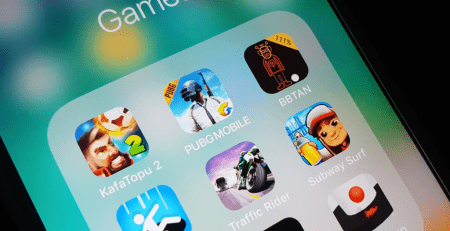How Mobile Phones Changed The Gaming Industry?
The gaming industry projects a positive move in the coming years. The rampant growth and adaptation of technologies gear the expected growth and expansion. One of the excellent contributors to this growth is mobile devices. That is because of their effects on people and their ability to change people’s attitudes towards online gaming.
When a new game gets introduced, people have the urge to get on board and play the game using their own devices. Nowadays mobile phones have become part and parcel of our daily lives. And cannot be replaced easily. Smartphones can help in handling almost everything besides communication.
Many prefer to work and play games on their smartphones by downloading various mobile games. The industry began with Snake and Tetris games and has evolved as time goes by.
Overview of the evolution of mobile games
In 1999, Japan commercialized mobile gaming. It spread to Asia, Europe, and North America, where there were smartphones as well. In 2008, when Apple launched its app store, the gaming industry had a dramatic change. Everyone with a smartphone could download mobile games with ease. As smartphone technology got smarter, so did mobile gaming.
Later on, people had difficulties with small screens on their mobile phones. That is because it caused neck pains and eye souring. The games got translated into a desktop version where people could now play on a larger screen with ease.
The developers got wise enough by learning how to advertise their games through a free mobile game. In the free games, you get rewarded with a video or wait for a given process to finish to get to the new step. This form of advertisement, like watching a short video, led to their success.
The target group has a significant impact on the games. These days mobile games targets teenagers and people in their early twenties. From the recent past, the female to male ratio on who plays the mobile games most shows that females have taken the lead.
Increased connectivity has been a positive development for mobile gaming. That is because most people who use the internet have smartphones. Some games are only playable with an internet connection. Meaning you will have to forget about some games in airplane mode. For the free games, you also need an internet connection to download the app. That is when you get the freedom to entertain yourself.
How smartphones have changed the gaming industry
New features on the gaming
Game developers are currently giving weight to features that rely on social gaming, real-time interaction, and live participation. the addition of virtual and augmented reality in mobile games has vastly increased the number of users. Smartphones have made it more simple since you can download the app and play cloud-based games in an offline mode.
Game focused smartphone
The development of mobile phones with high-performance processors is a trending issue in the market. The high-performance processors make the phones capable of having new gaming technologies like augmented and virtual realities.
Continuous market growth
As the market grows, more revenue is generated. Smartphones have the major percentage in promoting mobile gaming compared to other mobile devices in recent days.
Innovation of the new gaming
Categorizing games relies on the constant introduction, evolution, and innovations within the gaming industry. It is unnecessary to put the different games in one genre since they overlap and fit into most categories. Smartphones’ flexibility can bring strategy games together with puzzle-based or role playing games and has led to diversity.
The future for the mobile gaming
Since the first smartphone launching in 2007, the mobile gaming industry has realized positive and consistent growth.
Mobile gaming has come with different outstanding factors that consistently brings its success. It is a convenient way to get to your game anytime or anywhere, just having a variety of games in your pocket. Therefore, mobile devices have changed the gaming industry. People are adapting to these portable and cost-effective devices.








